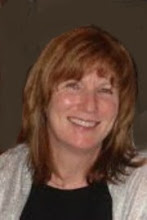Emmet Street and St. Mary's Parish Church
are located at the top of Mary Street, Dungarvan.
 |
| St. Mary's Parish Church. Photo by Libby Cotter Flynn |
Emmet Street is named
after the poet and orator, Robert Emmet. Born on March 4, 1778. He was a member
of the United Irishmen, and an Irish nationalist. Emmet led the unsuccessful 1803
rebellion against British rule.
 |
| View of Emmet Street from the corner of Mary Street. Photo by Libby Cotter Flynn |
He was captured and tried for high treason on September 19, 1803.
Emmet concluded his speech from the dock
with these words:
"Let no man write my epitaph; for as no man who knows my motives
dares now vindicate them, let not prejudice nor ignorance asperse them. Let
them rest in obscurity and peace: my memory be left in oblivion, and my tomb
remain uninscribed, until other times and other men can do justice to my
character. When my country takes her place among the nations of the earth,
then, and not till then, let my epitaph be written'
 |
| Photo by Libby Cotter Flynn |
On
September 20, 1803 Robert Emmet climbed the scaffold steps with a steady
resolve. He addressed the crowd in a loud firm voice:
''My Friends, I die in peace and with sentiments of universal love
and kindness towards all men''
 |
| Emmet Street from the corner of Friary Street. Photo by Libby Cotter Flynn |
A rope was placed around his neck. The plank under him was tilted.
He hung for a few minutes and then was beheaded. Robert Emmet was 24 years
old.
 |
| View of Emmet Street from outside St. Mary's Catholic Church. Photo by Libby Cotter Flyn |
You would be hard pressed not to find an Emmet Street wherever you
go in Ireland today.




No comments:
Post a Comment